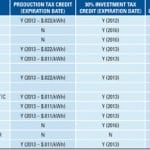Biofuels projects present a variety of risks in today’s business climate that must be mitigated or hedged in order for project financing to proceed. With the contraction in the capital markets, credit quality has become increasingly important.
There is no longer any “cookie cutter” format, financial model or template for successful financing of a business project. Success is often dependent on distinguishing your project from the rest and on “cobbling” together a financing package after identifying all available federal and state incentives and grants as well as commercial financing sources.
Here are some tips to help ensure your project will have the best opportunity for success.
Debt Financing
- Have offtake and feedstock agreements in place prior to seeking financing. This is of paramount importance. Agreements (even binding letter of intent) in offtake revenues and feedstock costs will allow lenders to monetize revenue stream.
- Structure the marketing and economic features of the project to obtain a credit rating in order to provide independent confirmation of the credit quality of the project.
- Seek to expand the universe of lenders beyond commercial banks, i.e., hedge funds, insurance companies and foreign corporations.
- Seek out all available federal and state grants, tax incentives, etc., including these:
–State renewable energy standards may provide tax and other incentives
–New Markets Tax Credits
–Tax Incremental Financing (TIF) Bonds may be available for a portion of the project costs
- Local offerings are still meeting with success:
–Not limited to “accredited investors”
- Consider having equity investors invest in the parent company rather than specific project.
- Increasing interest in Foreign Investment in U.S. Projects:
–Private equity
–Dubai stock exchange
- Better control of Operational Risk:
–Benchmarking and forecasting tools and margin models give managers immediate understanding of proposed contract ramifications.
–Need to know revenues and expense on ongoing real-time basis.
- Well-capitalized companies will weather the risks more successfully.
- Professional management will attract more financing sources.
Engineering, Procurement and Construction Agreements
- EPC contracts favoring the project developer are becoming more readily obtainable.
- Landscape has changed dramatically in since 2007.
- Demand is down so owners no longer have to pay premium to get in queue.
- Performance guarantees (wraps) are perhaps becoming easier to obtain.
- Trends with wraps:
–Warranties still heavily negotiated – need to obtain warranties re yield, throughput and quality specs.
–Insist on consolidating all mediation for prompt dispute resolution.
- Putting projects out for bid is more viable.
- Consortium of EPCs can provide more flexibility but requires more oversight by owner.
Conclusion
We expect the markets will open up to a greater extent during the second half of 2010. In the meantime, seek out every possible source of financing, meet with state and local officials to thoroughly investigate what financial investors may be available, and finalize feedstock and offtake agreements as early in the process as possible in order to make the project more financeable.










